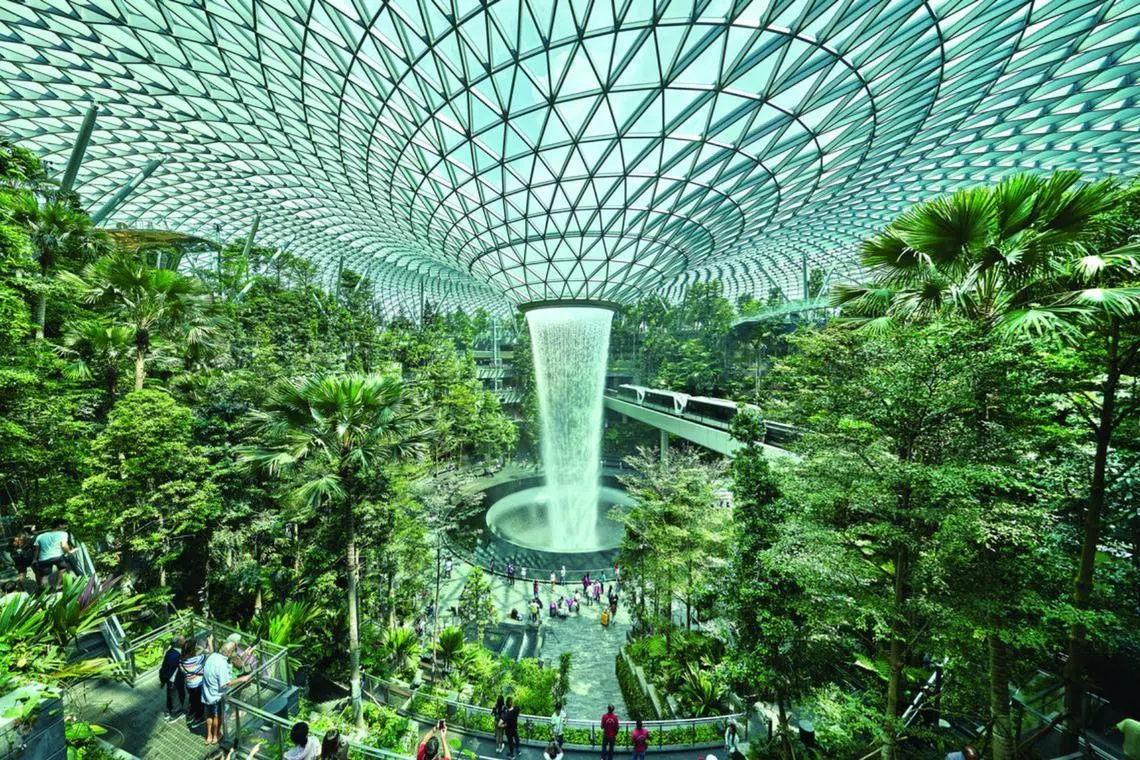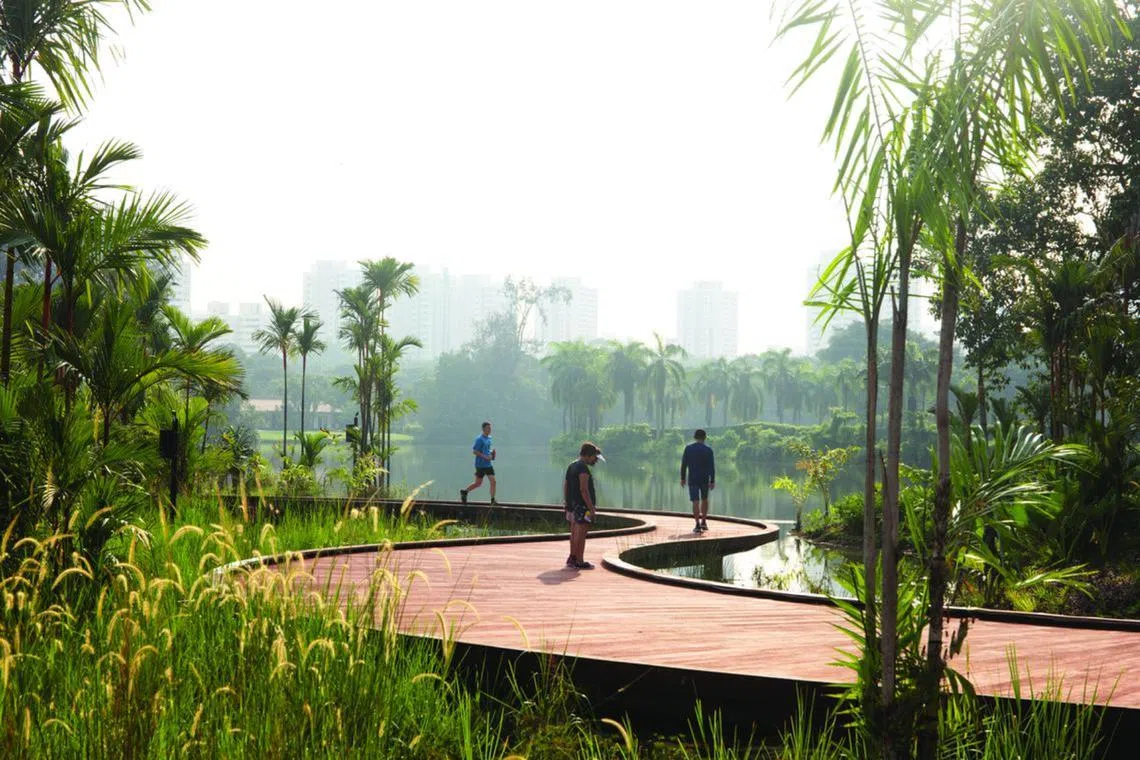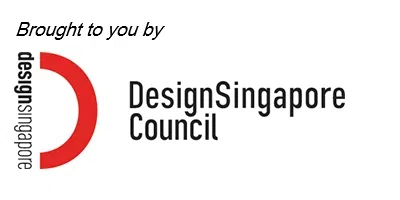A nation by design
From public housing to healthcare, design has shaped Singapore’s development for 60 years, and will drive the solutions needed for the future
Sign up now: Get ST's newsletters delivered to your inbox

Pinnacle@Duxton: Singapore’s first 50-storey public housing project.
PHOTO: ARC STUDIO AND ARCHITECTURE URBANISM
Follow topic:
WHEN then Prime Minister Lee Hsien Loong described Singapore as a “Nation by Design” in 2018, he captured the belief that progress must be intentional. From public housing to floodplains, the country’s development reflects deliberate choices supported by good design.
This has helped Singapore build a global reputation for turning constraints into possibilities as it transformed limited land into neighbourhoods of thriving communities through urban planning, and used architecture to manage climate risks. This distinct design-led development also earned the city-state a UNESCO Creative City of Design recognition in 2015.
According to Dawn Lim, Executive Director of the DesignSingapore Council (DSG), the same approach remains key as Singapore enters its next chapter.
“In the early days, design was about getting the basics right. We needed to house a nation, build infrastructure, and get people connected to jobs and services. That was foundational design, and it was incredibly effective,” she says. “Today, we see Care, Sustainability, and Emerging Technologies as key issues where design can make a deep impact on Singapore’s future.”
Design that builds better lives
A striking example of Singapore’s pioneering mindset is Pinnacle@Duxton. Designed by local architectural firm ARC Studio Architecture + Urbanism and launched in 2009, it was Singapore’s first 50-storey public housing project. With its sky gardens, walkways, and communal decks, it showed that high-density public housing can be both liveable and appealing as it picked up international awards like the World’s Best Housing Development at the World Architecture Festival in 2010.
Design has likewise reshaped Singapore’s spaces for public good. Led by landscape architect and President*s Design Award 2023 Designer of the Year, Leonard Ng, the 53-hectare Jurong Lake Gardens was transformed into an inclusive community garden, restoring biodiversity while enhancing climate resilience in the process. Using a nature-based approach, the park doubles as a floodplain, capturing and slowing stormwater before it reaches the lake.
In healthcare, hospices such as Oasis @ Outram demonstrates the critical role of design. Lekker Architects and The Care Lab reimagined palliative care through human-centred design of the space and programmes at Oasis @ Outram which bring healing and dignity to the patients.
Design has also changed how government services are delivered to be more intuitive and accessible. Apps like LifeSG put hundreds of services on a single interface, while ServiceSG centres offer in-person assistance for those who prefer a human touch.
As Lim points out, these design solutions – whether in physical spaces or online – are not just functional, they reflect empathy and an understanding of everyday needs. “Singapore is designing not just structures, but experiences. Whether it’s how someone navigates a hospital, a hawker centre or a digital service, we’re thinking more deeply about the human experience,” she explains.
Intergenerational design journey
Singapore’s story would not be complete without the individuals who have shown what local design can achieve. Take Nathan Yong, an industrial designer trained at the former Baharuddin Vocational Institute, Singapore’s first design and applied arts school. His storied career includes being the recipient of both the Red Dot Concept Design Award from 2006 to 2007 and the President*s Design Award for ‘Designer of the Year’ in 2008. He has created furniture for Ligne Roset, Sancal and Herman Miller through his line Nathan Yong Design and further licensed his designs for exports – proving that local design can be commercially successfully.
“I never approached design with the idea of ‘local’ or ‘international’. Human needs are quite universal. If you want your designs to have a future, they need to be relevant globally,” says Yong. Today, the designer is paying it forward as a Programme Leader at LASALLE College of the Arts, where he mentors and nurtures the next generation of designers in Singapore.
Other homegrown studios such as STUCK Design, co-founded by a DSG scholar Yong Jieyu, Lee Tze Ming and Donn Koh, are blazing a trail with their standout designs as seen in the award-winning AIR+ Smart Mask, cult-favourite Morning Coffee machine, and its latest AI-powered creativity tool, Hypersketch.
“Keeping the human element at the centre isn’t just a design principle for us – it’s the reason we design in the first place. STUCK’s shift from design consultancy to developing tools like Hypersketch has been about rethinking how creativity can be sparked and shared more widely. It is something that could empower anyone to access and grow their creative potential,” says STUCK’s Koh. “In our journey, DesignSingapore Council has been a vital partner. The Council nudged us to think bigger. Much of what we’ve dared to pursue – and the scale at which we now think – is rooted in the confidence and stretch that came from working with them.”
The global stage
Globally, Singapore is positioning itself as a hub for bold design solutions for the world, through platforms like the Singapore Pavilion at the Venice Architecture Biennale, World Expo, and the yearly showcase of Singaporean designers at Milan Design Week. This forward-thinking approach carries significant long-term economic implications. As countries worldwide grapple with complex challenges in an ageing population, healthcare, public services, and sustainability, Singapore is uniquely positioned to offer answers to global challenges in areas such as healthcare, sustainability, and urban living.
In the latest Future Impact 3: DESIGN NATION at Milan Design Week this year, design stalwart FARM tied up with Changi General Hospital and technology firm Vouse to present a digital twin of an emergency department, which demonstrates design technology at work in healthcare. The event also highlighted emerging talents: Nazurah Rohayat presented an AI-powered textile work blending tradition with technology while E Ian Siew displayed Auxobrace, a James Dyson Award-winning sternal rehabilitation device.
Equipping talent for the future
This momentum reflects a deeper national movement: integrating design thinking into education to cultivate future-ready innovators and promoting design literacy in the community. To help groom a pipeline of design talent, DSG has been running workshops for students aged 7 years onwards through its Learning by Design initiative which is open to schools. In addition, it has worked closely with the Design Education Advisory Committee to prepare the next generation for a future where design and technology must go hand in hand.
Education institutions are already at the forefront of this development. The Singapore University of Technology and Design (SUTD) is investing $50 million to integrate AI into its curriculum; its first cohort of Design and AI graduates has entered the workforce. Meanwhile, Temasek Polytechnic’s Design School has launched a generative AI lab to give students a hands-on experience with AI tools.
It’s not just the schools which are adapting. Local SMEs like LionsBot are proving that design-led innovation is a competitive edge. The robotics company clinched top honours at this year’s The Business Times and SUTD Design, AI and Tech Awards for its fleet of AI-powered cleaning robots which are designed to be accessible to the elderly and less tech savvy, according to the company’s head of design Tan Wei Hua.
The big picture
Design has long been integral to Singapore’s nation-building story. Looking ahead, Singapore must not only continue to cultivate great designers, it will require a society that thinks and problem-solves like one. The collective mindset must also evolve for Singapore design to gain greater appreciation and depth.
“The idea of ‘Singapore design’ is reliable, functional, well-engineered, but less often seen as soulful or distinct. That’s changing slowly. When we start valuing and supporting those things more intentionally, Singapore design can evolve beyond being well made into being deeply felt,” shares Yong.
Summing up, Lim says: “If design helped build this nation, it will shape what we become next – an even more caring, inclusive and thoughtful society.”
Snapshots of Singapore’s design journey
1. Designing the ultimate gateway

Jewel Changi Airport is a biophilic feat that redefined the airport experience.
PHOTO: TIM HURSELY
From its functional beginnings in the 1980s, Changi Airport has grown into a global benchmark for airport experience. Jewel Changi Airport introduced a new level of design-led placemaking, while the upcoming Terminal 5 is envisioned as a “vibrant microcity that is distinctly Singaporean – lush, layered, and deeply human,” according to Trent Tesch, head designer for the project at Kohn Pedersen Fox.
2. The Baharuddin education legacy
The former Baharuddin Vocational Institute helped train generations of Singapore designers, including Nathan Yong and Low Cheaw Hwei. Low, a design leader in the corporate world, chaired the Design Education Advisory Committee, a national platform for design education thought and practice leadership launched by DSG in 2020.
3. Sustainability, every day, every way
Singapore incorporates sustainable design extensively from biophilic buildings and self-cooling architecture to a city-wide network of lush park connectors. These everyday features make green living a part of the daily landscape.
4. Public housing on the global stage
Going from basic pre- and post-war flats under the Singapore Improvement Trust (SIT) to award-winning estates like Bidadari shows how design has elevated public housing. In fact, Bidadari won the prestigious World Gold award at the 2024 FIABCI World Prix d’Excellence Awards.
5. Building a ‘Blue Zone 2.0’

Jurong Lake Gardens is among Singapore’s many parks promoting active lifestyles, contributing to a Blue Zone 2.0.
PHOTO: HENNING LARSEN
Design is a key tool in Singapore’s approach to health and longevity. With ample green spaces and accessible healthcare, the city is recognised as a “Blue Zone 2.0” which promotes well-being by design.


